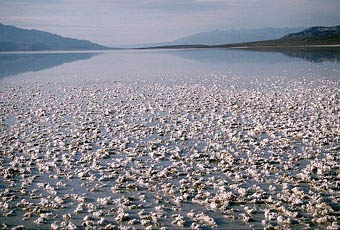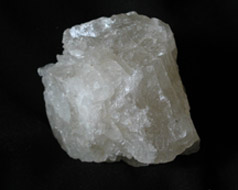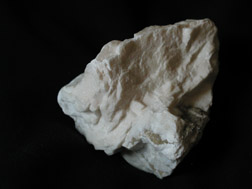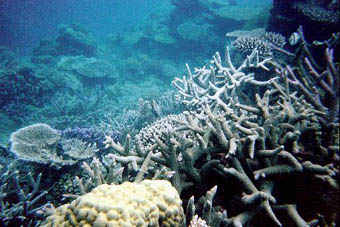Click on image for full size
Courtesy of Martin Miller, University of Oregon
Chemical Sedimentary Rocks
Like other types of sedimentary rocks, chemical rocks form at the Earth’s surface, are usually found in horizontal layers, and do not form from molten rock. However, unlike most other sedimentary rocks, they are not made of clasts of sediment. Instead they are made of mineral crystals that formed from chemicals dissolved in water.
The water in the oceans, lakes, and underground is often full of dissolved minerals and other elements. All sorts of things can dissolve into water. If you put a spoonful of salt into water, the salt will eventually dissolve into the water. Seawater tastes salty mainly because there are salts such as halite (NaCl) dissolved in it. There are other chemicals dissolved in water as well, including Calcium (Ca), Carbon ( C), and Oxygen (O).
When water is so full of elements that not all will fit, some are not able to remain dissolved. They come out of solution, or precipitate, forming solid mineral crystals. Precipitation is the opposite of dissolving. Minerals precipitate when some water has been evaporated or when a chemical reaction occurs. Evaporation takes only water molecules into the atmosphere so the elements in the remaining liquid water become very concentrated. Eventually, they do not all fit and some precipitate out as mineral. In the picture at the left, minerals, mainly halite and gypsum, are precipitating out of shallow water that has flooded the bottom of Death Valley in California. The valley is so hot and dry that water evaporates very quickly, leaving behind the minerals that were dissolved within it.














